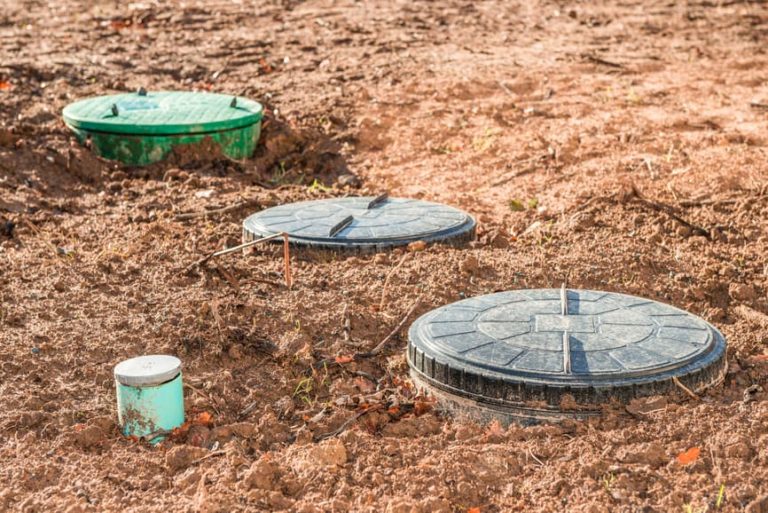Dig with confidence. We’ll do the sewage line and septic tank locating before you dig and risk costly system repairs. We do this with some basic intuition and years of experience.
For instance, one of the most valuable tools for finding a septic tank is a soil probe—a thin piece of metal that pierces through the soil to quickly locate anything that might be buried underground. Insert your soil probe every two feet starting from the location where your sewer line leaves your home and follow it straight out. We should find your septic tank between 5 and 25 feet away from your home.
This is also a great way to locate the septic tank cover. Septic tank covers are generally at or just below ground level and are not always visible to the naked eye. While we strongly recommend keeping your cover clean and uncovered in the event you need an emergency septic service, not all people do this.
1. Use a Septic Tank Map
If you are a new homeowner, a septic tank map should be part of your inspection paperwork. We can use that to help pinpoint the exact location of your tank. If you don’t have this map, there are a few other tactics we can try.
2. Inspect the Property
Looking closely at your property, there’s a good chance we can actually find your septic tank without any probing at all. In many cases, a septic tank is typically indicated by a small dip or hill on your property that can’t really be explained. This is because the hole builders dug for your septic tank may not have been exactly the right size, but they went ahead and installed the tank anyway.
A hole that was too small will leave part of the top of the tank sticking out above ground level, and builders will often cover the rest of the tank with more soil, creating a tiny mound on your property that is often covered with grass, soil, or other smaller plants. A small divot or depression is a sign that the hole was too big, and your builders simply never filled the depression to level off the hole. This is typically an area that gets extremely wet or even floods during rains.
3. Start Ruling Areas Out
We can pretty much guarantee that your septic tank will not be found in a few specific places. Either because of code violations or because it simply doesn’t make sense, we more than likely won’t find your septic tank near any of the following:
- If you have one, your water well (for some fairly obvious reasons)
- Any paved surfaces (it won’t be under a patio, sidewalk, or driveway unless they were added well after the home and nobody conducted a proper inspection before building it)
- Any special landscaping or near trees
- Underneath your home
- Against your home
- Under structures such as a patio or deck
Key things to look for in your yard include:
- Extra green grass: When septic tanks are overfilled, sewage can seep out into the ground and act as a fertilizer for your lawn. An extra-green patch of grass is a good indication that your septic tank is right below it.
- Unexplained puddles: Seriously overfilled septic tanks might cause water to pool up on your lawn. An unexplained puddle of water is another clear sign that your septic tank is below.
- Uneven ground: Sometimes, when installing septic tanks, installers accidentally create high or low spots on your lawn. If you come across some uneven ground, your septic tank could be right there.
If we spot an area where your septic tank might be located, we’ll use the metal soil probe to make sure. When the metal soil probe hits the tank, we can use a shovel to dig up the grass and locate the septic tank lid.

4. Follow Sewer Main and Sewer Pipes
One of the easiest ways to find your septic tank is to follow your sewer pipes. These pipes are approximately 4 inches in diameter and are often located in the basement or crawlspace of your home. We can follow the pipe across your yard, using the metal soil probe every two feet or so until finding the tank.
Additionally, every drain in your home leads to the sewer main, and your sewer main leads to the septic tank. Therefore, in order for a successful septic tank locating to occur, the sewer main should lead us straight to it.
5. Check Property Records
If all else fails, looking at your property’s public records will probably clue us in on the septic tank locating. Because septic systems all require permits for installation, your builders likely obtained a permit for your property. That means they created a detailed plan showing your property and exactly where they planned on installing the tank. This ensures the local health department is aware of the tank and can address any problems it might cause.
If you own an older home, these records might not be available, but they can be easily accessible most times. In fact, we might be able to find the original construction records for your home without ever even getting in the car or going to your local records office. Some municipalities have these records available online.
